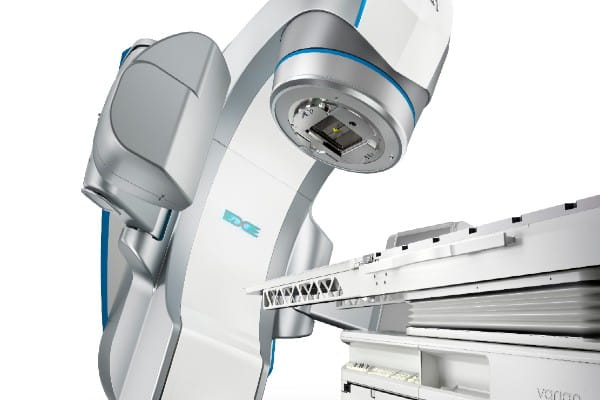Spinal Tumors and Metastatic Lesions Overview
What are spinal tumors and metastatic lesions?
Malignant (cancerous) and benign (non-cancerous) tumors can grow along the spine, compressing the spinal cord and causing various neurological complications. Both kinds of tumors can form on the bones (vertebrae), inside the spinal cord, in the tissue around the spinal cord or in the space between the spinal cord and bones. In these same locations, metastatic lesions (areas of cancerous tissue) can develop when someone has an advanced stage of cancer that originated somewhere else in the body, such as the prostate or the skin.
Who gets it and when?
In adults, most cancerous tumors in the spine are metastatic lesions from another type of cancer that has spread through the body. In men this is common with prostate carcinoma involving the lumbar spine. In women breast cancer can metastasize to the spinal column and cause pain. Benign bone tumors, of which there are multiple types, usually occur spontaneously in adults, though there are some specific types that can run in families. Other benign growths, such as bone cysts, can also look and act like benign tumors. Primary bone cancers like osteosarcoma and chondrosarcoma can also involve the spinal column and usually require surgery and radiation treatments which is administered by other cancer specialists, the radiation oncologists.
Spine Tumor Causes and Risk Factors
What are the causes and risk factors of spinal tumors and metastatic lesions?
The cause of spinal tumors that aren’t metastatic lesions is largely unknown. Metastatic lesions and tumors on the spine can occur with any cancer, but the most common types include breast, colon, kidney, lung and prostate.Spine Tumor Symptoms
What are the signs and symptoms of spinal tumors and metastatic lesions?
Symptoms of spinal tumors and metastatic lesions vary based on where the tumor is located. Most occur in the thoracic or lumbar areas of the spine, but they can develop anywhere. Patients may experience:
- Pain at the location of the tumor that is often intense, deep and makes sleep difficult
- Pain that does not respond to over-the-counter pain medicines like NSAIDs
- Pain that radiates down a limb (depending on location)
- Numbness, weakness, tingling and muscle twitches or spasms
- Loss of bowel and bladder control
Spine Tumor Diagnosis
How are spinal tumors and metastatic lesions diagnosed?
Diagnosing a spinal tumor or metastatic lesion will begin with a medical history and physical exam. Diagnostic imaging will be used and may include an X-ray, MRI, CT and/or PET scan. Depending on the situation, a biopsy may be obtained to determine if the tumor is malignant and what type of cancer it is, which can help determine the best treatment. Lab tests such as blood tests may also be ordered.
Spine Tumor Treatment
How are spinal tumors and metastatic lesions treated?
To address spinal tumors or metastatic lesions, a neurosurgeon will develop a unique treatment plan for each individual patient in conjunction with a multidisciplinary team. Treatment may be a combination of medication, radiation/radiosurgery and conventional surgery.
Medical
Chemotherapy drugs may be utilized to kill cancer cells in and around the spine.
Conventional Surgery
Depending on size and location, it may be appropriate to remove part, or all, of the tumor surgically.
Radiosurgery
Stereotactic body radiation therapy (SBRT), also known as stereotactic radiosurgery, utilizes highly precise radiation beams to treat tumors without the incisions used in conventional surgery. Learn more about Riverside’s radiosurgery services.


